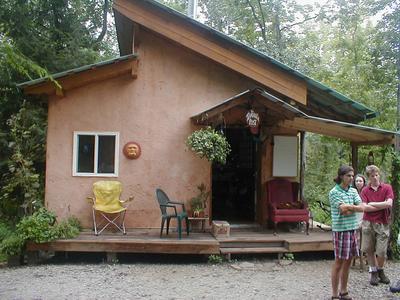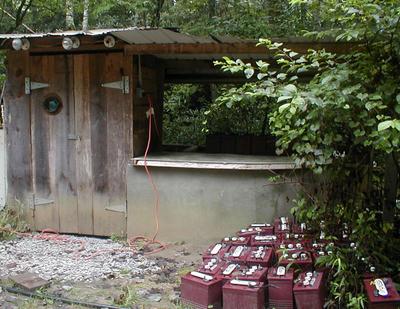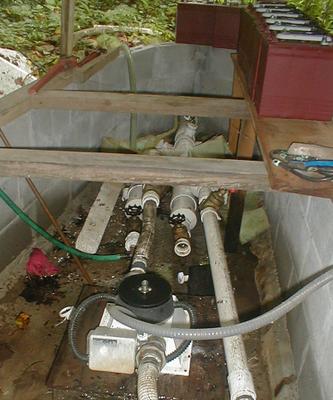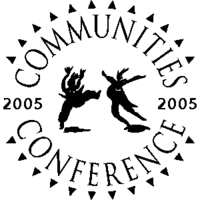As an educator, I am particularly interested in teaching critical thinking skills to young adults. I believe they are a necessity for surviving and thriving these confusing times. I have found a kindred spirit in Dr. Pete Markiewicz. I read the following letter from him over on
Urban Survival, and I thought it was so important that I got permission to reprint it here.
*****
I've been thinking lately about the pull that religion had over people's lives in the past (and continues to do so in many places in the world). How could humans (with no genetic changes) abandon their ancient attraction to religious belief suddenly during the few centuries? Are we really smarter than earlier cultures? Or have we applied our bent to religion to a set of new targets?
My current idea is that widespread belief in often absurd "conspiracy theories" has sopped up people's religious impulses. I'm not talking about rational inquiry into alternative causes, but uncritical belief. Nobody is actually an athiest. We have a new religion - but it is based on the behavior of powerful humans rather than unseen gods. These mysterious "evil" humans have corrupted an initially perfect world of the past for their own ends. Everything bad is caused by them.
I've been driven by this thinking recently by several experiences. First, I teach students at a local college. I teach a lot of entry-level computer classes, as well as a "general studies" Biology class. The reactions of the supposedly sophisticated, non-religious students demonstrate a clear "retargeting" of their religious impulses.
Second, a conversation I overheard in my apartment building a few days ago crystallized my impulse.
Here's the conversation from my apartment: I think it's fair to say that many people in the US today do not see the lightning bolts that struck hapless scoutmasters this week as the result of a specific, conscious decision of an angry god. We all know they are physical phenomena, which operate without intelligence. This is one of the differences between religion and non-religion - intent. If lightning bolts strike due to various tumblings of matter and energy, it isn't religion, despite what the "science as religion" crowd says. The scouts are electrocuted for no reason, which means no human values need be applied to the event.
But, if the lightning bolts happened "for a reason" then religion is involved - there is a moral intent bound with the event.
Imagine my surprise yesterday hearing my neighbor talking with friends about the second scouting electrocution. This neighbor works in the entertainment industry, is frantically anti-Bush, and hates "the religious right."
Speaking to her friends, this neighbor pointed out that said lightning bolts slammed down just prior to a "Bush visit." She noted that "they" - the radical religious right - must be very upset that a lightning bolt hit prior to a Bush visit - I suppose they would interpret it as a bad omen.
But then my neighbor (who normally seems reasonable) broadly hinted to her friends that there was "something behind" this electrical event. A secret, which she did not clarify, was the REAL reason for the lightning bolt. What was it? She didn't quite say - we were left to imagine the CIA manipulating the weather, a secret weapon tested on the American public, a warning to Bush from his "masters" - you name it.
Here's the fascinating part. In the same speech, she made it abundantly clear that she was an "athiest" and hated "religious" people. But here she was imagining hidden causes, meaning, and purpose behind the event. She was doing EXACTLY what she thought "the religious right" would do - ascribe meaning to a random physical event!
Frankly, it doesn't really matter whether the lightning bolt actually from a flying saucer - despite herself, this woman believes in higher powers, and in miracles. I listened for an hour as she darkly hinted at the sinister implications of the lightning strike - never exactly saying that it was "meant" to happen - but implying this very thing over and over.
Who is "god" in her religion? People. Instead of a big thunder-being up in the sky making the rain come, sneaky people are in a vast conspiracy. Like the unseen the god, "they" cannot be touched, uncovered, or even seen by lowly mortals. Yet the believer knows that they are there - no mater what the physical evidence is. In their faith, the believer triumphs over those who have not been enlightened.
I believe (with my degree in Biology) that the religious impulse is partly innate. Rather than moving beyond religion, as Marx, Skinner, and others hoped we would do, we have simply directed our prayers to a different object. Instead of classical gods, our new gods are people - people with vast, mysterious godlike power.
There are several reasons for the change in our civilization from a "god" - worshiping culture that one that worships mysterious humans in conspiracies. These changes challenged the old gods, but replaced them with equally supernatural new ones. These have led to a set of non-rational beliefs about the world which characterize our "conspiracy" religion.
In short, here is a summary:
1. Everything is controlled by a higher power - there are no random events. But this power is human, and human only.
2. Secret groups of people with this power cause everything to happen.
3. They have this vast power because absolutely anything is possible. As long as I imagine it, it can and will happen. There are no limits except human ones.
4. Since there are limits in my life, they can only have been created by humans.
5. If not for the conspiracy, we would be in a Paradise. All bad things in the world were caused by humanity - there is nothing outside humanity. Before humanity had godlike powers, everything was perfect.
Below, I've laid out the logical steps that have led to this belief system:
Belief #1 - "Thou shalt accelerate your technology forever faster"At one time, technological innovation was seen as just that - a better way of doing things. This was characteristic of the 19th and early 20th centuries, in which much of the real "heavy lifting" of technological took place. People celebrated the ability of the human mind to discover things.
But now, technological advance is an unstoppable force int its own right, independent of humanity itself. It isn't that we manage to discover new technology - instead, an unstoppable spiritual force force us to advance technology ever-faster.
One of the clearest examples of this religious belief is the so-called "Moore's Law" which says that computer speeds double every 12-18 months. When Moore originally published his paper in the 1960s on compute speed increase, he presented it as an empirical study of the semiconductor industry. At this point, no religion was evident.
But now we have moved to a new idea - Moore's Law is a rock-solid given and computer makers "must" continue to to speed up computer because Moore's Law requires them to do so. It is moved from a statement of being to a moral law!
Consider the difference in the following statements:
a. Computer speeds are doubling every 18 months due to shrinking transistors (~1965).
b. Computer speeds ALWAYS double every 18 months. Any company that doesn't double the speeds of its computers is "not upholding" Moore's Law. But will someone double those speeds - Moore's Law cannot be stopped (~2000). But never, fear, Moore's Law is being upheld in the latest gadget.
In fact, computers are not following Moore's Law anymore. PC speeds topped out at about 3 GHz clockspeeds a few years ago, and Intel announced in late 2004 that they were NOT going to produce a 4GHz cpu for the indefinite future. True to the religious aspects of Moore's Law, writers in the tech industry ignored this challenge to their faith. They take the rise of 64-bit computing as "proof" that Moore's Law is still active - despite the fact that 64-bit computers are not faster - though they can more RAM.
"Multicore" processing is also taken as proof for Moore's Law "making" something happen just as we can't increase clockspeeds. In other words, Moore's Law "acted" and a new way to increase computer speed automatically appeared. This is despite that fact that for most non-server applications multicore systems give minimal speed boosts. It's similar to the faith that every time humanity use up one energy source (wood, coal) another, better energy source "automatically" appeared.
Even though the tech writers know there are limitations at some level, they remain confident that "somehow" Moore's Law will be upheld and computers will get faster forever.
Their faith that mysterious forces also ignore the fact that the utility of computers (their real value) have not increased with speed. The 2004 Macintosh G5 computer is about 1000 times faster than the 1984 Macintosh in hardware terms. But go back and look at the 1984 Mac. Running at 1/1000 the speed, it sported a useful word processor using full window/mouse/graphical systems. It also had a drawing program that looks very much like Adobe Photoshop today.
True, the word processor didn't have a spell check, and the paint program was in black and white. But are today's word processors and paint programs really 1000 times better than 1984? I would guess they are 10-20 times better. Even if computer speeds are rising, their utility to society is rising at a much slower rate!
Yet, Moore's Law is now a true LAW that all tech companies must uphold or face destruction. Any time there's an announcement of a change in memory, processors, etc, the tech industry assures that the new innovation ensures that they are keeping the faith - that Moore's Law will be kept, no matter what. Today, even though computers are leveling out in speed and utility, a stubborn faith in endless speed increases persists.
This belief system reaches its extreme stage in those beliving in the "singularity" - a sort of technological Rapture. These people believe that Moore's Law is accelerating, and that computer power will literally become infinite about the year 2040. The basis for their belief? "Moore's Law". But it is not a law, it is an observation, at best a hypothesis - not a unstoppable force.
Moore's Law forms one of the new pillars of faith among the general public as well. Outside the techies (hoping to be transported to the divine by the multi-pentahertz machines of 2038), the average person firmly believes that "technology always gets better". Tell someone that technology can halt, even reverse its advance, and you are met with disbelief. You've challenged a tenet of their new religion - the god Technology will always get better despite us.
In my mind, this is why it is so hard for many people to believe that we might have some real problems coming in permanently higher energy prices, loss of oil, degradation of the environment, etc. Try telling someone that computers won't be that much faster in 10 years, and they shake their head. They "know" they will be, even if they know absolutely nothing about how computers work.
A similar faith surrounds economics. People simply won't believe that prosperity always increases - things can only go up. There can be no economic waves or cycles. If they happen, "they" made them happen.
If we aren't richer this year, it must be a conspiracy.
Belief #2 - Anything is possible if you "wish upon a star" I've adapted this idea from James Kunstler's excellent writing. The belief in Moore's Law, along with increasingly detailed fantasies in movies and games has made people believe that "anything" is possible. The fact that technology has improved means it will improve infinitely.
This goes beyond believing that more will be possible in the future - it is the belief that absolutely anything is possible, or will be shortly.
This belief is qualitative, and ties in with the decline in quantative thinking. If someone imagines something in their head, it must therefore be possible. There can be no limits, even quantative, physical ones. It's like the miracle of the loaves and fishes - if I can imagine bread, then it follows that everyone can be fed from one loaf.
Case in point: I've tried repeatedly to explain to my students that a purely solar-powered car can't be like cars today due to the laws of thermodynamics. In full sunlight a few thousand watts fall on a car, and if this was 100% converted to energy the car would have a few horsepower at best.
But even after this discussion, students still insist that "someone will figure something out." The laws of nature aren't relevant - "they" will of course solve it and make a solar car that goes 300 miles an hour. (In fact, they already have and are suppressing it). The students don't reason out of any understanding of physics or technology. When pressed, students essentially say that since we can imagine solar cars and they are neat, they "must" be possible.
There's a similar touching belief in "air cars" beloved of science fiction - despite there being nothing remotely practical in this area. When I ask students why we don't have air cars, they typically say that that the "auto companies" don't want us to have them. No mention of the fact that there is no anti-gravity needed to make a silent, easily driven, Jetson's style machine. If I point this out, they are sure that "they" will discover a way to float air cars.
It's not that we might discover something in the future - it's that it is impossible for us NOT to do so!
This uncritical belief that anything is possible is why nobody seriously believes that energy will become scarce. Anything is possible, so it will happen. Energy might exist, so it will. If I note that oil reserves are dropping, students say that there could be undiscovered oil. That's enough for them - if we can imagine "oil not discovered", it must be there! Again, no knowledge of geology and physics goes into this argment - only a belief that anything is possible.
Belief #3 - There is nothing outside human experience. Humanity is everything, and anything I hear about MUST have been caused by humans.
If you believe that anything is possible, then the reason it hasn't happened yet is not any limits placed by Nature. Instead, any barriers, limits, boundaries to infinite personal freedom and power MUST be due to people. By extension, this means that people are responsible for everything that exists in the world.
True, in the past people might have believed in "anything goes" reality. For example, many believed that immortal beings that could fly. But they would have thought they were a "supernatural" being outside of humanity.
Today, people feel that immortality "must" be possible simply because I can think it. Therefore, it HAS happened, or is about to happen. The only reason it hasn't is due to humanity. Humanity is the only source of boundaries in the world.
This idea has been greatly spurred along by advances in entertainment technology. Movies today have computer-generated characters, objects, and machines that defy physical reality. Advances in animation have allowed us to give these impossible creatures and devices disturbing aspects of realism. The trend is even stronger in videogames, which virtually everyone under age 35 plays today. Today, the typical teenager has replaced outdoors unstructured play with play in virtual worlds, obviously constructed by people. If you belive the videogame is "realistic" then stuff in the videogame could easily happen in our world.
We see the ultimate fusion of virtual worlds, conspiracy, and a belief that anything is possible in "The Matrix" movies.
As a result, adherents of the new religion reject the notion that any barrier to their wants (read consumerism) is due to outside forces. They can only be human-caused.
Belief #4 - Since anything is possible, the only barriers are human will. So, if something has not happened that should, it is due to an evil "conspiracy" of humans.
I recently saw this belief when I asked my students to weight the pros and cons of AIDs virus being created by the US military. I provided evidence from both sides - in particular recent discoveries of AIDs cases reported in the 1930s and 1940s from European sailors visiting West Africa. I asked the students to use the evidence to justify their position, pro or con.
The result? Most completely ignored evidence both for and against. Instead, they assumed a conspiracy, and assumed that all the evidence I provided has been doctored. When they read about old AIDs cases from the 1930s and 1940s, they immediately postulated that the old cases were "planted" to support the conspiracy. When I noted that our ability to engineer viruses was primitive in the 1960s (when AIDs is supposed to have been created), the students immediately postulated that a "secret lab" stumbled on the techniques of advanced genetic manipulation. When I pointed out that plagues have attacked people for thousands of years, one student even suggested that this was "disinformation" - in other words, we were disease-free until the late 20th century.
Only a very few students suggested rational ideas - e.g., that we should look closely at the RNA structure of AIDs for signs of manipulation, check published papers from the 1960s and 1970s, etc. and use this evidence to make a decision on the question. These students were the only ones who are not part of the new religion.
The rest, like all zealots, ignored all the facts to support their belief: anything is possible, so AIDs MUST have been created. Since it is bad, it was created by evil people, since people are responsible for everything. This was not a hypothesis that could be falsified - it was religious certainty impervious to contrary information.
Belief #5 - Everything was perfect until "they" took over In our culture today we have largely isolated ourselves from anything outside the human sphere. We no longer have the direct, daily contact with the natural world that our ancestors did. We have moved from being isolated from the harsh aspects of nature to believing that nothing happens outside the human sphere.
I see this frequently when I ask students about the physical world - they're just as likely to believe that earthquakes are caused by someone with earthquake machines as that physical properties of the Earth cause them. In fact, the latter seems less likely to them - after all, they can imagine an earthquake machine, and they saw a movie with one once.
Because people do admit that humanity had less power in the past, they accept that earthquake machines could not have existed long ago. But, instead of concluding that earthquakes may be natural, they apparently believe that there were no earthquakes back then. In fact, there is a widespread belief that nothing bad happened in the old days - simply because humans couldn't make bad things happen yet.
As an example, I've described to students how we eradicated polio from the US in the 1950s and 1960s. Many students are surprised to discover that diseases existed back then! When asked, they apparently believe that the world used to be disease-free, and all our diseases today are caused by a "drug company" conspiracy.....
So, there you have it - our new religion. This faith even includes local gods and goddesses who cannot be blasphemed - usually entertainment celebrities. People who have no problem mocking conventional religions bristle with anger if you attack a "fallen" celebrity like Kurt Cobain - a depressed musician who killed himself with self-destructive behavior. He cannot be bad-mouthed - it's not allowed... It's amazing what sacred cows entertainment celebrities have become - while some may be mocked, others (e.g. rapper Tupac) cannot be blasphemed under any circumstances. I suspect this results from the lack of physical religious artifacts in the conspiracy religion - one must have something tangible and "good" to worship. The unreal world of entertainment celebrities substitutes for the gods of the past.
==========================
You might be amused by my final demonstration of the new religion, and the credulity of its followers. Last week, I told a class of students that the Atlantic is only 20 feet deep, London is 10 miles away from New York, and ocean liners run on metal tracks between the two cities. The reason? There's a conspiracy by the oil companies to keep plane tickets high - they just fly the planes around for several hours to burn up fuel on so-called "transatlantic" flights. The ocean is 20 feet deep because metal can't float - and the ships are made of metal. Ergo, the ships would sink except that they are on tracks on the ocean bottom.
Within 20 minutes I had several students actually supplying "supporting evidence" for my concept- in particular, the idea that "they" want us to burn oil seemed like "proof" to them, as did their inability to reason out why metal ships do float.
After about 30 minutes I stopped - I was worried that I had spawned a new cult!
*****
E
mail Pete Markiewicz. Visit his w
eb siteA note about his website: In his email to me, Dr. Markiewicz explained "If you've seen the site, you may be wondering how my strong interest in resource depletion couples with building a robotic car. I actually think it does - I suspect that if private cars are at all common in 2040, they will be driven for maximum efficiency under robotic control, instead of manually."


 We drove a very winding road up the mountain to the front gate. We were planning on staying in the A & A so followed the signs across three streams (two of them without bridges) to a large three-story building with a big garden in front.
We drove a very winding road up the mountain to the front gate. We were planning on staying in the A & A so followed the signs across three streams (two of them without bridges) to a large three-story building with a big garden in front.  We were welcomed by the proprietors, sisters Patricia Allison and Mary Armstrong. Their mom and Patricia's son and grandson live there too.
We were welcomed by the proprietors, sisters Patricia Allison and Mary Armstrong. Their mom and Patricia's son and grandson live there too.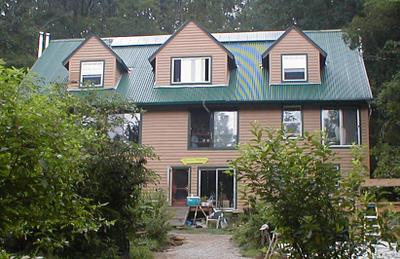 The accommodations were modest, to stay the least. The house was basically unfinished. It was built from recycled shipping crates and the walls were raw wood. The first floor was taken up by seven bedrooms, a kitchen and a big dining room. We got special permission to use the indoor bathroom as there were not many guests that night.
The accommodations were modest, to stay the least. The house was basically unfinished. It was built from recycled shipping crates and the walls were raw wood. The first floor was taken up by seven bedrooms, a kitchen and a big dining room. We got special permission to use the indoor bathroom as there were not many guests that night. 





